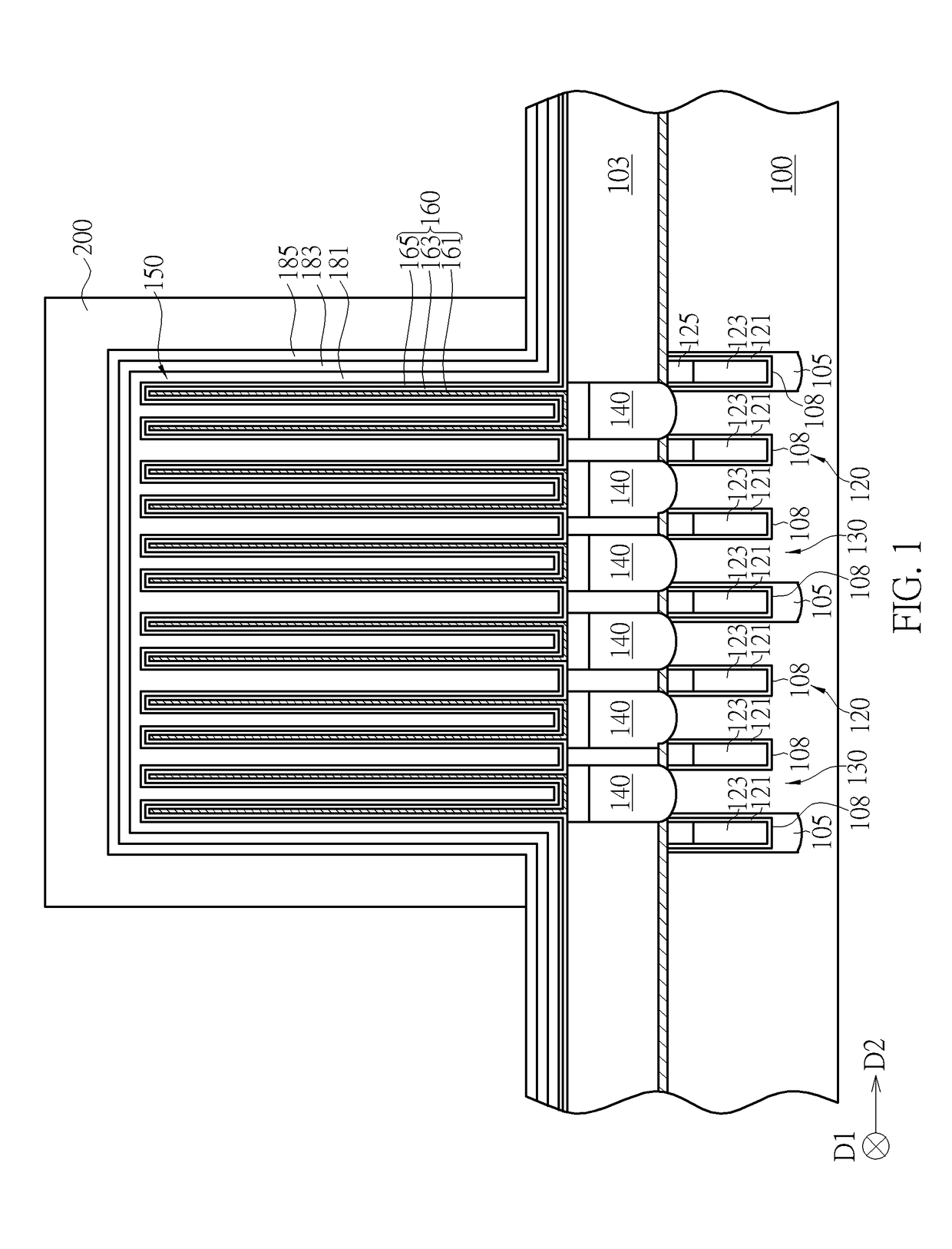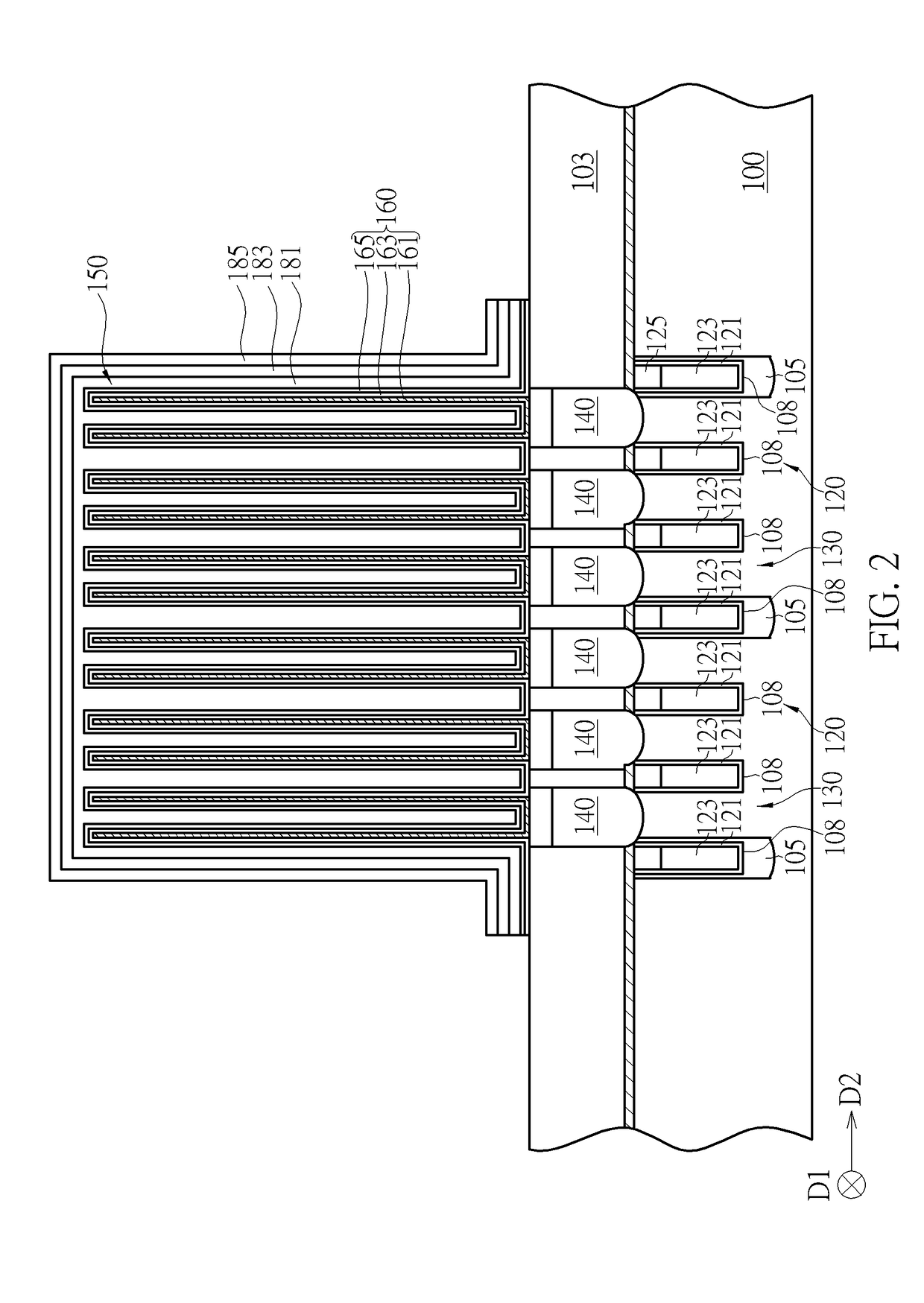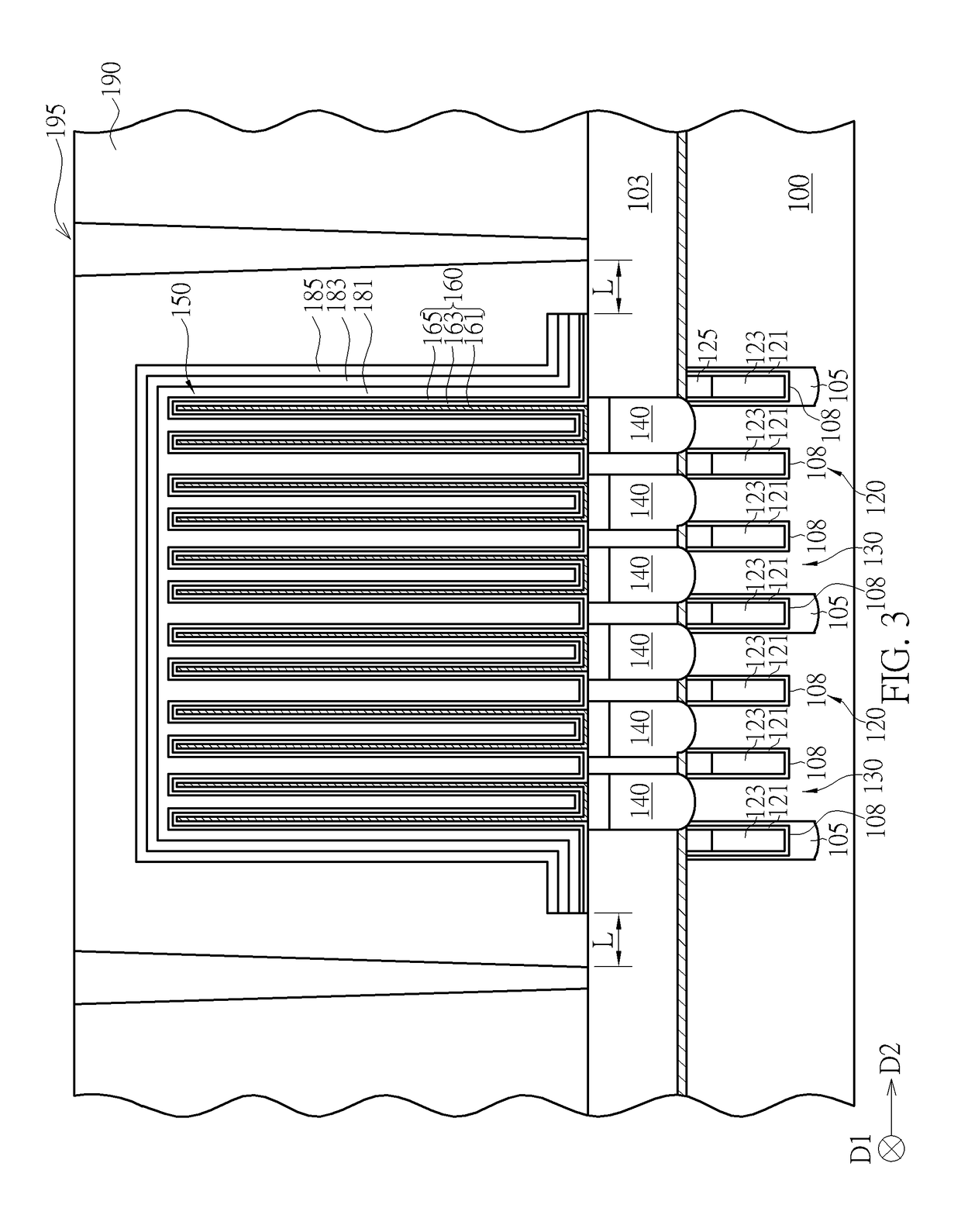Semiconductor memory device and method of forming the same
a memory device and semiconductor technology, applied in the direction of digital storage, capacitors, instruments, etc., can solve the problems of more and more difficult fabrication of the interconnecting structure for electrically connecting the memory cells, and achieve the effect of improving device reliability, reducing the space between the memory cell region and the peripheral region of the semiconductor memory device, and improving the integrity
- Summary
- Abstract
- Description
- Claims
- Application Information
AI Technical Summary
Benefits of technology
Problems solved by technology
Method used
Image
Examples
second embodiment
[0042]Please refer to FIG. 8 to FIG. 13, which are schematic cross-sectional diagrams illustrating the steps of forming a semiconductor memory device according to a third preferred embodiment of the present invention. The process and chosen materials for forming the structure as shown in FIG. 8 of the third preferred embodiment are similar to those in the first preferred embodiment and the second embodiment and will not be narrated herein. The difference is that, in the third preferred embodiment, the stacked structure is patterned by being etched in a stage-by-stage manner by successively performing multiple etching processes.
[0043]As shown in FIG. 8, the stacked structure may include, from bottom to top, a semiconductor layer 181, a conductive layer 183, a first insulating layer 187 and a second insulating layer 189. Preferably, the first insulating layer 187 and the second insulating layer 189 have an etching selectivity with respect to each other. The thickness of the second ins...
fourth embodiment
[0050]After patterning the insulating layer, the mask layer 230 may be removed. Another etching process using the patterned insulating layer 185 may be performed to etch the conductive layer 183 and the semiconductor layer 181, thereby obtaining a patterned conductive layer 183 and a patterned semiconductor layer 181. Preferably, the lateral portions of the conductive layer 183 may be completely removed, and the lateral portions of the stacked structure may be greatly reduced. Afterward, similarly, a dielectric layer (not shown) may be formed on the substrate 100 and a plug (not shown) may be formed in the dielectric layer, thereby obtaining the semiconductor memory device according to the embodiment. The method disclosed in the fourth embodiment may achieve the purpose of reducing the lengths of the lateral portions of the stacked structure by fewer process steps with respect to other embodiments by forming the mask layer 230 only covering the top surface of the capacitor structure...
PUM
 Login to View More
Login to View More Abstract
Description
Claims
Application Information
 Login to View More
Login to View More - R&D
- Intellectual Property
- Life Sciences
- Materials
- Tech Scout
- Unparalleled Data Quality
- Higher Quality Content
- 60% Fewer Hallucinations
Browse by: Latest US Patents, China's latest patents, Technical Efficacy Thesaurus, Application Domain, Technology Topic, Popular Technical Reports.
© 2025 PatSnap. All rights reserved.Legal|Privacy policy|Modern Slavery Act Transparency Statement|Sitemap|About US| Contact US: help@patsnap.com



